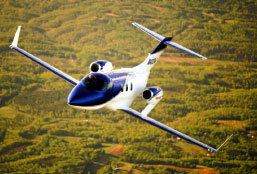The photograph of Honda's experimental business jet reminds me of the adage 'If it looks like it should work, it probably will’.
Well, it looks sexy and we are told Honda has found two benefits (increased cabin space and reduced fuel consumption) by mounting the engines high above the wing section. But what if the engines stop?

The engines on a jet are mounted beneath the wings to promote a nose-down action on the plane in the event of thrust being lost.
Should both this jet’s engines fail, their profile would surely present a drag force (Fd) that will create a nose-up turning moment equal to the product of Fd and the perpendicular distance from the line of action of the force to the point of action (l) — in this case the wing section of the aeroplane: M = Fl.
As the plane goes nose up, the attack angle of the wing section increases and this results in movement of the lifting force forward of the centre of mass.
If left unchecked, the situation would rapidly deteriorate with ever-rising displacement of the increasing lifting force and hence nose-up pitching of the plane.
However, the situation would not continue indefinitely because at a certain attack angle the wing would stall and the plane would be in a spot of bother.
Now, where did I put that parachute.
Peter Woodstock
Farnham










Water Sector Talent Exodus Could Cripple The Sector
Well let´s do a little experiment. My last (10.4.25) half-yearly water/waste water bill from Severn Trent was £98.29. How much does not-for-profit Dŵr...